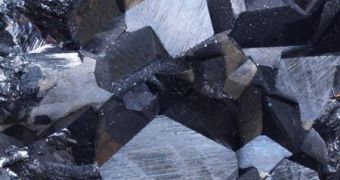Magnetite is a naturally occurring compound on Earth and some quantities can even be produced by bacteria on our planet. Considering that magnetism can be detected relatively easy with the help of instruments produced with the current technology, a future mission to the Red Planet could find and return magnetite mineral back to Earth in order to be studied for any evidence of bacteria or other life forms similar to terrestrial magnetite producing bacteria.
The technique has been proposed by Soon Sam Kim from NASA's Jet Propulsion Laboratory, one of the scientists involved in the efforts to find signs of life on Mars. "Because it's just a mineral, it has a better chance of survival over billions of years", said Kim.
"It looks like a very interesting idea - to look for signatures of these crystals on Mars directly", says John Miller from the University of Houston. Most of the studies are generally focused on finding organic molecules or direct evidence of alien life. Terrestrial bacteria synthesize magnetite in order to orientate themselves through space with the help of Earth's magnetic field, much like a human being can find his/her way through the wilderness with a compass.
Although Mars doesn't present a global magnetic field as the Earth does, it might have had one in the distant past. "If that's the case, then there could have been impetus for organisms of that nature to evolve - if indeed life took hold", says Miller. Magnetite is produced by living organisms as a byproduct of the use of iron for metabolism, and by the looks of it Mars has plenty of iron, mostly trapped in the form of oxides.
The tell tail evidence that a certain magnetite deposit has been created by bacteria lies in the variations in magnetite crystal sizes, which also give the mineral its unique magnetic properties. An instrument capable of detecting such rocks has already been devised by Kim, measures nearly half a meter in length, weighs 2 kilograms and would require only 5 watts of power to function properly. It has been tested on the infamous ALH84001 meteorite from Mars, which in 1996 was said to contain evidence of fossilized Martian life.
The rock does indeed contain magnetite, but the magnetic signatures proved inconclusive in making a clear evaluation of whether the mineral occurred naturally or it was created through a biological process. It is possible that either the meteorite did not contain enough magnetite or it presented both types of biological and non-biological material, which could have led to uncertain results.

 14 DAY TRIAL //
14 DAY TRIAL //